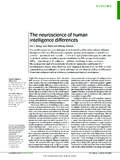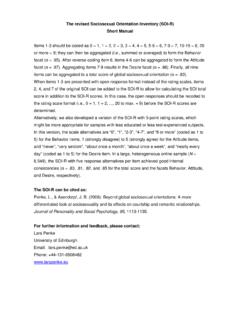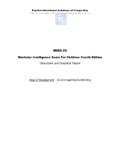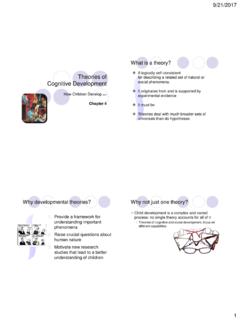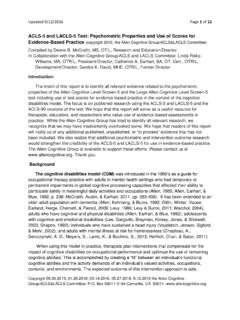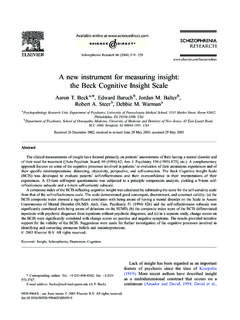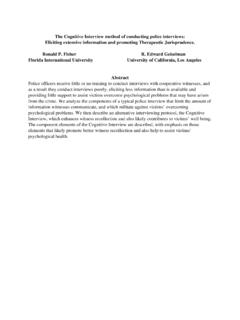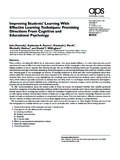Transcription of Brain iron deposits are associated with general …
1 Brain iron deposits are associated with general cognitiveability and cognitive agingLars Penkea,b,c,1,*, Maria C. Vald s Hernand zb,1, Susana Mu oz Maniegab,c, Alan J. Gowa,b,Catherine Murraya, John M. Starra,d, Mark E. Bastinb,c,e, Ian J. Dearya,b,c,1,Joanna M. Wardlawb,c,1aDepartment of Psychology, The University of Edinburgh, Edinburgh, United KingdombCentre for cognitive Aging and cognitive Epidemiology, The University of Edinburgh, Edinburgh, United KingdomcSINAPSE Collaboration, SFC Brain Imaging Research Centre, Department of Clinical Neurosciences, The University of Edinburgh, Western GeneralHospital, Edinburgh, United KingdomdGeriatric Medicine Unit, The University of Edinburgh, Edinburgh, United KingdomeDepartment of Medical and Radiological Sciences (Medical Physics), The University of Edinburgh, Edinburgh, United KingdomReceived 20 November 2009; received in revised form 26 March 2010.
2 Accepted 27 April 2010 AbstractA novel analysis of magnetic resonance imaging (MRI) scans based on multispectral image fusion was used to quantify iron deposits inbasal ganglia and microbleeds in 143 nondemented subjects of the generally healthy Lothian Birth Cohort, who were tested for generalcognitive ability (intelligence) at mean ages of 11, 70, and 72 years. Possessing more iron deposits at age 72 was significantly associatedwith lower general cognitive ability at age 11, 70, and 72, explaining 4% to 9% of the variance. The relationships with old age generalcognitive ability remained significant after controlling for childhood cognition, suggesting that iron deposits are related to lifetime cognitivedecline. Most iron deposits were in the basal ganglia, with few microbleeds.
3 While iron deposits in the general population have so far beendismissed in the literature, our results show substantial associations with cognitive functioning. The pattern of results suggests that irondeposits are not only a biomarker of general cognitive ability in old age and age-related cognitive decline, but that they are also related tothe lifelong-stable trait of intelligence. 2012 Elsevier Inc. All rights : cognitive aging; Intelligence; general cognitive ability ; iron ; Hemosiderin; Basal ganglia; Cognition; MRI1. IntroductionMaintaining cognitive functions in old age is importantin an aging society. Whereas some age-related cognitivedecline is normative, there are large individual differencesin its severity (Hedden and Gabrieli, 2004). At all ages,individuals who perform better on 1 type of cognitive abilitytest tend also to perform above average in a broad variety ofother types of cognitive ability tests.
4 Underlying this is acommon factor of general cognitive ability (also calledgeneral intelligence or g ) that explains about 50% of theindividual differences in the performance of diverse cogni-tive tests and is largely equivalent to the intelligence quo-tient (IQ) that broad cognitive batteries provide (Deary etal., 2010; Jensen, 1998; Jung and Haier, 2007). Normative(nonpathological) age-related cognitive decline tends tomostly affect this common factor and, to a lesser extent, theunique variance of some specific cognitive abilities (Salt-house and Czaja, 2000).The biological factors underlying normal cognitive aginghave been nominated as a priority for public health research* Corresponding author at: Centre for cognitive Aging and CognitiveEpidemiology, Department of Psychology, The University of Edinburgh, 7 George Square, Edinburgh EH8 9JZ, United Kingdom.
5 Tel.: 44 1316508482; fax: 44 131 Penke).1 These authors contributed equally to the of Aging 33 (2012) 510 $ see front matter 2012 Elsevier Inc. All rights (Deary et al., 2009), yet they remain largely unclear. Cere-bral small vessel dysfunction may explain some age-relatedcognitive decline (Waldstein et al., 2001). Most studies ofvascular dysfunction and cognition have focused on whitematter lesions seen on Brain imaging, but their effect ap-pears to be modest (Frisoni et al., 2007). There are otherimportant markers of small vessel impairment, such as brainmicrobleeds. These are increased in individuals with cere-bral small vessel disease, but are also found in about 5% ofotherwise healthy older adults (Cordonnier et al., 2007).Microbleeds are small focal microhemorrhages that leaveresidual iron deposits (IDs), mainly as the insoluble oxyhy-droxide of hemosiderin, in lobar white matter, the basalganglia, and internal capsule (Casanova and Araque, 2003;Cordo nnier et al.
6 , 2007;Harder et al., 2008). Microbleedsappear as hypointense round dots on T2*-weighted mag-netic resonance imaging (MRI) scans and are associatedwith hypertension, amyloid angiopathy, future risk of strokeand, when frequent, with cognitive impairment (Cordonnieret al., 2007). Other forms of IDs also appear in the basalganglia where the lenticulostriate arteries enter the brainsubstance. These basal ganglia IDs increase in prevalenceand extent with increasing age, correspond with increasedattenuation on computed tomography (CT) scanning andhence were assumed to be calcium. Basal ganglia IDs aregenerally regarded as asymptomatic physiological conse-quences of aging, and consequently, unless present to asevere degree, have been ignored (Bartzokis et al.
7 , 2007;Casanova and Araque, 2003). However, detailed histopa-thology shows that these mineral deposits are closely relatedto small blood vessels and show staining properties predom-inantly of iron , although a small proportion of calcium maybe present (Casanova and Araque, 2003; Slager and Wag-ner, 1956; Yao et al., 2009). Their association with agingdifferences in the normal range has rarely been studied(Bartzokis et al., 2007) and relationships with cognitivedifferences have so far only been tested for a few specificcognitive tasks in 2 rather exploratory samples (Pujol et al.,1992; Sullivan et al., 2009). Reports of relationships be-tween IDs and differences in normal cognitive aging apotential precursor of and contributor to pathological cog-nitive decline (Hedden and Gabrieli, 2004) are absentfrom the literature.
8 We tested the potential role of accumu-lated Brain IDs as a biomarker of lower normal range gen-eral cognitive ability and age-related cognitive decline in ahealthy elderly cohort on whom childhood general cognitiveability scores were SubjectsThe sample of this study was composed of 147 membersof the Lothian Birth Cohort (1936;Deary et al., 2007). Fourparticipants were excluded from further analyses becausethey showed signs of dementia or minor cognitive impair-ment (self-reported medical history and/or Mini MentalState Examination [Folstein et al., 1975] scores below 24).Thus the size of the final sample was 143 (74 women, 69men). Unique advantages of this sample are the availabilityof cognitive test scores over a period of more than 6 decades(see below) and a very narrow age range (71 to 72 years;mean, ; SD, ), which is desirable for studies ofindividual differences in cognitive aging (Hofer and Sliwin-ski, 2001).
9 Their years of full-time education ranged be-tween 9 and 20, with the average and median being (SD, years). All were Caucasian and lived inde-pendently in the community. Written informed consent wasobtained from all participants under protocols approved bythe National Health Service ethic committees (MREC andLREC). NeuroimagingBrain images were obtained at age 72 from a GE SignaLX T MRI clinical scanner using a self-shielding gra-dient set with maximum gradient strength of 33 mT/m, andan 8-channel head array coil in the SFC Brain ImagingResearch Centre, University of Edinburgh ( ). The relaxation and echo times (TR and TE) of thesequences scanned for each image modality were msfor T1-weighted (T1W), 11,320 ms for T2-weighted(T2W), 940/15 ms for T2*-weighted (T2* W) and 9,002 ms for fluid-attenuated inversion recovery (FLAIR) cognitive testingThe participants underwent cognitive testing at 3 timepoints.
10 general cognitive ability was assessed at all 3 timepoints using 2 different measures: First, the Moray HouseTest number 12 (MHT), a measure of general cognitiveability or IQ, had been administered when participants were11 years old as part of the Scottish Mental Survey of 1947(Scottish Council for Research in Education, 1949). Thesame test was readministered in this sample during a fol-low-up at a mean age of almost 70 years, using the sameinstructions and the same 45-minute time limit. The psy-chometric quality of the MHT has been established byDeary et al. (2004). Second, at a further follow-up at a meanage of 72 years, 6 subtests from the Wechsler Adult Intel-ligence Scale Wais-IIIUK were administered: SymbolSearch, Digit Symbol, Matrix Reasoning, Letter-NumberSequencing, Digit Span Backwards, and Block Design(Wechsler, 1998).
